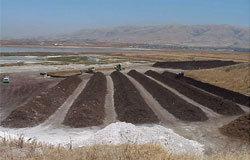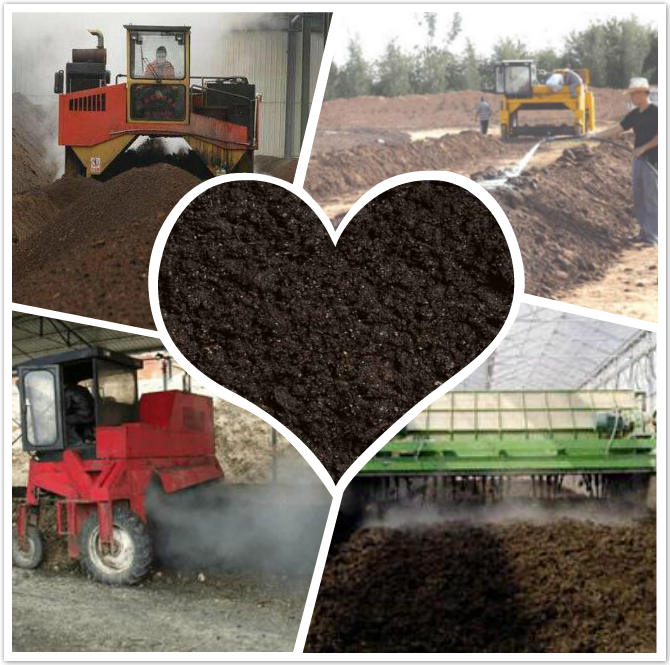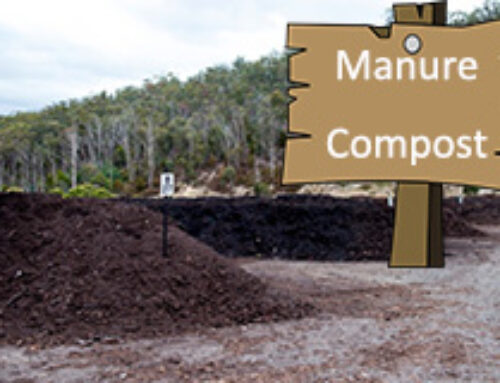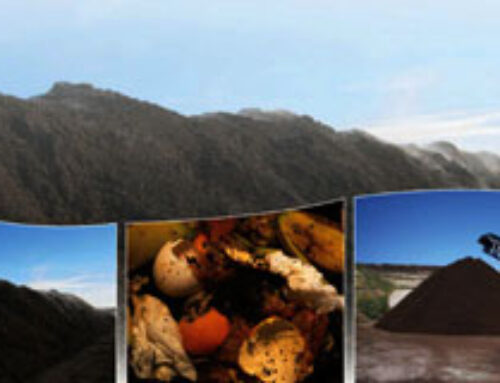During the process of commercial organic fertilizer production, there is a crucial piece of equipment that plays a significant role in the organic waste fermentation stage – the compost turner machine. We would introduce some basic knowledge about compost turners, including their functions, types, and how to choose a suitable one.
Functions of Compost Turner
Compost turner has become the core equipment of dynamic aerobic composting in virtue of the important effects on compost and fermentation.
- Mixing function in the tempering of raw materials: in composting, it is necessary to add some minor ingredients in order to adjust the carbon-nitrogen ratio, pH value, and water content of raw materials. Main raw materials and minor ingredients that are put together according to certain proportions could be mixed uniformly by a professional compost turner for better tempering.
- Adjusting the temperature of raw material piles: during the working process, the compost turner can make raw materials fully contracts and mix with air, which can adjust the temperature of piles conveniently. Air helps aerobic microorganisms to produce fermentation heat actively, pile temperature rising. Meanwhile, if the pile’s temperature is high, turning piles can bring the supply of fresh air, which can lower the temperature. And various beneficial microorganisms grow and breed in the adaptive temperature range.
- Improving the permeability of ingredient piles: the composting system can also crush the stick and ropy raw materials into small masses, making piles fluffy, stretchy, and with appropriate porosity, which has been an important standard to measure the performance of compost turners.
- Adjusting the moisture of raw material piles: The water content of raw materials for fermentation should be controlled within 55%. In the fermentation process, the biochemical reaction would generate new water while the consumption of microorganism to raw materials also cause water to dissociate due to losing its carrier. And using a composting machine to turn piles could emit vapor compulsorily.
- Realizing the special requirement of the composting process: For instance, compost turn could realize the requirements of crushing raw materials or mensurable shifting.
Types of Compost Turner
Compost turners could provide the operator with more control and more comfort, produce the desired effect from the turning action, accommodate large or different sizes of windrows, travel, and transport more easily. Here are common types of compost turners which make it easier to capitalize on composting market opportunities by offering equipment that helps process organic waste quickly and efficiently, accelerating the organic fertilizer production process.
- Hydraulic windrow compost turner: This series of compost turners produced by Whirlston also has three types, including crawler type full hydraulic compost turner, crawler type hydraulic auxiliary compost turner, and wheel type hydraulic auxiliary compost turner, specially designed compost turning machines that can do the turning job faster, more effectively and with added utility. With the characteristics of compact design, simple operation, and saving workplace, this composting machine could be conveniently used in various fields of different raw materials, such as livestock manure, domestic sludge, food waste, agricultural organic waste, and so on.
- Groove-type compost turner: It adopts the chain drive and rolling support plate structure, with small turning resistance, and energy saving, and is suitable for deep groove composting operation. Besides, its crushing ability is strong and the material pile has a good effect of oxygen filling. Its horizontal and vertical displacement can realize the turning operation at any position in the groove, which is flexible. But it also has the limitation that it can only work with a fermentation tank, so choosing this one needs building the matched fermentation tank.
- Self-propelled compost turner: Driven by four wheels, this compost turner is specially designed equipment for windrow
composting and fermentation technology to produce organic fertilizer. It has strong adaptability for the site(not only suitable for outdoor open area, but also for workshops and greenhouses), safe and reliable performance, and convenient maintenance. According to the principle of aerobic fermentation, this machine provides enough space for homogeneous bacteria to play its role.
Tips for Choosing Compost Turner
Whether you’re just entering the market, or are experienced with composting and looking to grow your operation, questions always arise as to what type of compost turner would best fit your needs and bottom line. The choices would narrow substantially after considering the factors, conditions, and objectives of the composting operation.
- When purchasing a compost turner, evaluate the equipment with regard to the safety of the operator, other site workers, and bystanders. As a minimum, make sure the equipment has the CE mark.
- The throughput of a particular compost turner is determined by its working travel speed and the size of the windrow that it can handle. Larger and more powerful machines generally have greater throughput rates because they process larger raw material piles, so readers could choose it according to the required material piles turning throughput.
- Also, consider the aisle space required by the compost turner. Self-driven compost turners need less aisle space than towed models.
- Cost and budget, of course, also affect the choice of composting equipment. The machine with a larger throughput and capacity would have higher prices, so choose one suitable for your requirement and budget.
In brief, compost turner accelerates composting in several ways. It mixes the composting mass, breaks apart particles, disturbs pockets of irregular materials, and disperses moisture, nutrients, and organisms. At every turn, you can rely on our composting machine.



 composting and fermentation technology to produce organic fertilizer. It has strong adaptability for the site(not only suitable for outdoor open area, but also for workshops and greenhouses), safe and reliable performance, and convenient maintenance. According to the principle of aerobic fermentation, this machine provides enough space for homogeneous bacteria to play its role.
composting and fermentation technology to produce organic fertilizer. It has strong adaptability for the site(not only suitable for outdoor open area, but also for workshops and greenhouses), safe and reliable performance, and convenient maintenance. According to the principle of aerobic fermentation, this machine provides enough space for homogeneous bacteria to play its role.

